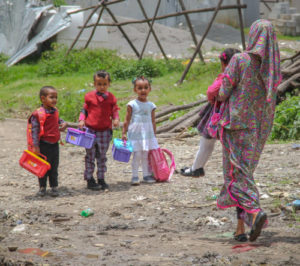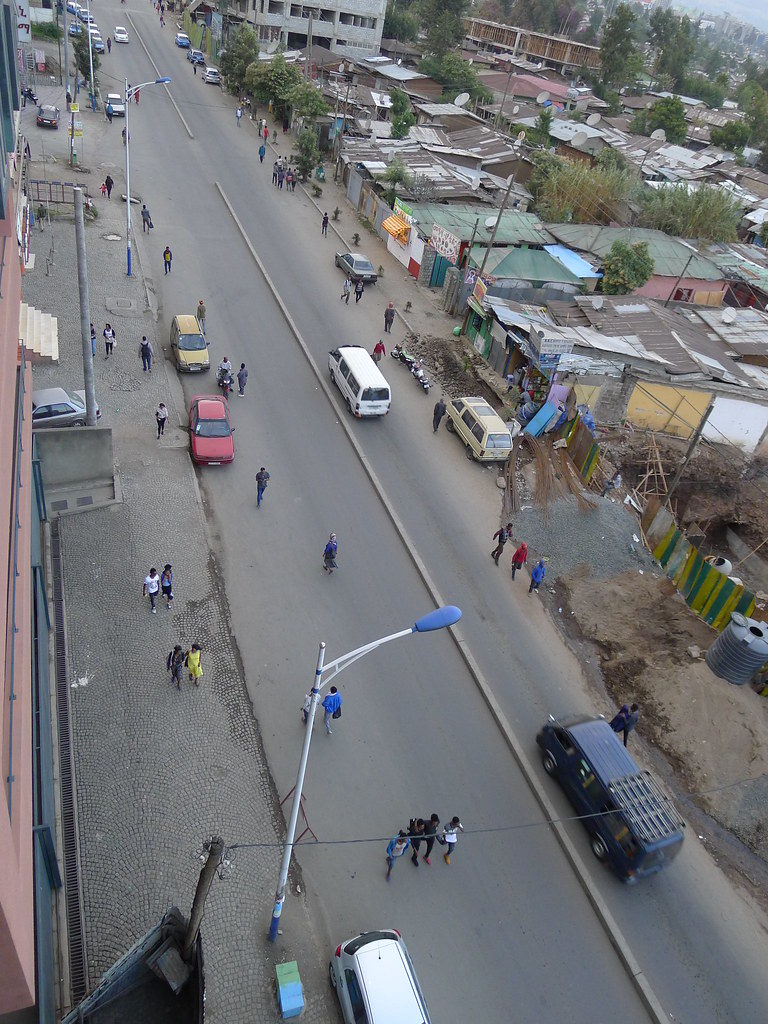
In Africa’s horn lies Ethiopia, the second most populous country in the continent (after Nigeria), with over 105 million people. In recent years the country has seen significant economic improvement and rapid population growth. Addis Ababa, the capital city with 3.2 million inhabitants is rapidly growing and like many growing cities, its urban environment has expanded to accommodate cars while having become increasingly hostile to pedestrians.

Fortunately, the grim quotidian reality of traffic fatalities and pollution brought about by the influx of personal cars is being addressed by the Addis Ababa Road and Transport Bureau (AARTB). With ITDP’s technical guidance and support, AARTB has unveiled an ambitious ten-year Non-Motorised Transport (NMT) Strategy to create a better urban environment for all city residents. In Addis Ababa, 85% of travel performed is by walking, cycling, and public transport, while only 15% is undertaken by private car. Despite the popularity of non-motorized travel, recent transport investments have mainly focused on the needs and rights of personal car users to the detriment of the rest.
With ITDP’s close partnership, the city is working to make its roads more hospitable to thousands of daily pedestrians, cyclists, and public transport travelers. Over the past year, the city rebuilt 28 km of walkways. “We know that continued investment in this new infrastructure will produce varied benefits in terms of public health, quality of life, and economic well-being,” explained Chris Kost, Africa Program Director at ITDP. With the NMT Strategy, AARTB hopes to support the continued economic growth of the city through common sense solutions that create a safer environment with fewer vehicle crashes.

Because so many people rely on NMT to get from place to place, improved walking and cycling infrastructure will support their movement and quality of life. NMT infrastructure will lead to lower pollution and will better connect people to educational, cultural, and economic opportunities. This NMT Strategy follows a multifaceted approach to street design and management, calling for traffic calming features, larger pedestrian walkways, crosswalks, and cycling paths. These improvements will be particularly significant for children who are currently unable to travel beyond their local neighborhoods due to the hostile road environment across Addis Ababa.

This strategy also focuses on improving many of the treacherous roads which have misaligned lanes and intersections and poor or missing signage – making urgent improvements that will increase safety. Having such a holistic and ambitious approach will lead to improvements across the board – safety, environment, travel will all be improved through these measures.

The Addis Ababa City Administration “commits to investing in sustainable transport systems that help tackle climate change, facilitate trade, and improve access to education, health, and jobs,” explains Dr Solomon Kidane Zegeye, Deputy Mayor of Addis Ababa. Addis Ababa is leading African cities looking to create greener, healthier environments, and also expand economic growth. The comprehensive measures outlined in the NMT Strategy are important in recognizing the reality of transport in Addis Ababa and the vital role that transport plays in economic prosperity. To acknowledge competing realities and respond to them with bold but pragmatic policies, Addis Ababa is demonstrating the power of cities to shape the future of their countries.
Download the Addis Ababa NMT strategy in English here.
Download the Addis Ababa NMT strategy in Amharic here.
